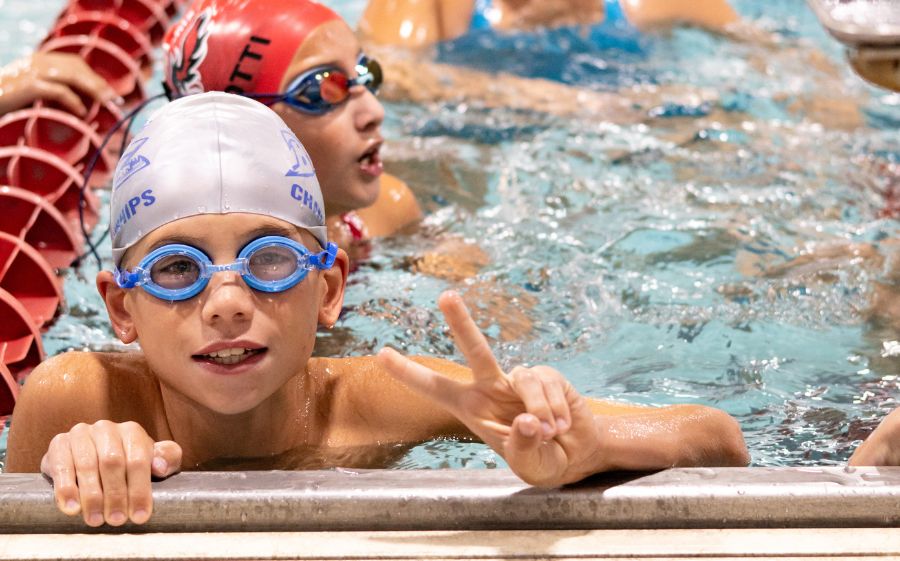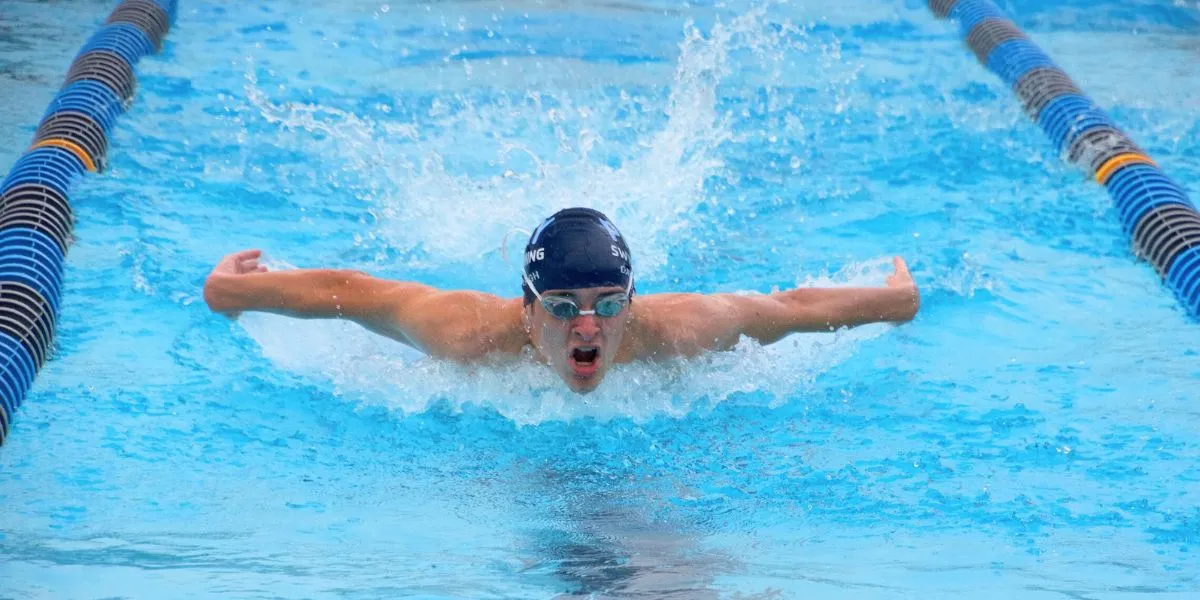
Published: 11/05/2024 - 9:00 AM
Swimming is more than just a recreational activity — it's an effective exercise that can help you build strength, coordination, and cardiovascular endurance. Swimming is also a competitive sport where athletes aim to achieve the fastest time.
In addition to swimming pools, you can swim in open water such as rivers, lakes, and oceans. Wherever you plan to swim, it's a good idea to practice and learn at least one of the different swimming techniques.
How Many Strokes Are There in Swimming?
There are four main competitive swimming strokes:
- Freestyle
- Breaststroke
- Backstroke
- Butterfly
Additionally, there are four alternative strokes — sidestroke, combat sidestroke, elementary backstroke and trudgen — for a total of eight styles. Here are the different swimming strokes you can learn.
1. Freestyle
The freestyle swimming technique is also known as the front crawl. It's the fastest swimming stroke used in competitive sports. Athletes choose this style because it is versatile and allows them to swim efficiently.
This stroke is performed by lying on your belly with your body parallel to the water's surface. You can then move forward using alternating arm movements, making a windmill pattern. Perform flutter kicks with your legs, and don't bend your legs at the knee.
You can perform various drills to increase your speed, power and technique for the stroke. Common drills for the freestyle stroke include:
- Single-arm drills: Swim freestyle with one arm while keeping the other arm at your side or extended in front. Alternate arms every few strokes.
- Kick drills: Perform flutter kicks using a kickboard. Aim to keep your legs straight and generate power from your hips.
- Catch-up drills: Swim freestyle, waiting for one hand to “catch up” to the other before starting the next stroke. Try to extend the leading arm fully before moving on to the other arm.
Freestyle competitions allow participants to choose any swimming style, but most choose the front crawl because it's the fastest stroke.
2. Breaststroke
The breaststroke is one of the more technical types of swimming strokes. It is also the most practiced and slowest of the four Olympic strokes. You're not required to submerge your head while performing this stroke, making it a preferred style for teaching new swimmers.
You perform this stroke with your stomach facing down, pulling yourself up to take a breath and start the motion. You then sweep your arms as your torso comes to the water's surface and kick your feet apart. The elbows remain under the water throughout this movement. In competitive swimming, you're not allowed to perform dolphin or flutter kicks while going into and coming out of each turn.
3. Backstroke
This is the only competitive stroke you can perform without facing downward. You use many of the techniques you'd use for the front crawl style. You have to rotate your body side to side to move. Alternate your arms with a windmill motion while engaging your legs in flutter kicks to propel yourself backward. Your face should be above the water, and you should look straight up.
The backstroke is a great back workout and is often recommended by doctors for people with back problems.
4. Butterfly
The butterfly is the most powerful and physically demanding stroke. It is an advanced front crawl style and Michael Phelps's favorite stroke.
Start with your stomach facing the bottom of the pool, your palms facing down, your head in a neutral position and your arms shoulder width apart. You then pull both of your arms down, then out and over the water surface simultaneously while performing a dolphin kick with your legs together.
Other Types of Swimming Strokes
The above swimming styles are used in major sporting events like the Olympics. Besides these styles, you can learn four additional strokes in swimming.
1. Sidestroke
This swimming style is mainly used for personal saving and lifesaving tow. Lifeguards typically use this style during a rescue because they can propel themselves as they pull the victim along. This stroke is characterized by double-arm movements and scissor kicks.
2. Combat Sidestroke
This is a form of sidestroke that the United States Navy SEALs must learn while training. The technique combines elements of the sidestroke, freestyle and breaststroke swimming styles. It is an efficient and energy-saving style of swimming.
This style makes you less visible and allows you to swim with maximum efficiency.
3. Elementary Backstroke
Elementary backstroke is a simple stroke and one of the first techniques beginner swimmers learn. This style is a variation of the backstroke — you'll have to lay on your back to perform it. To propel yourself, move your arms synchronously while kicking your legs.
4. Trudgen
This stroke is named after the English swimmer John Trudgen. It combines the freestyle and sidestroke styles, where you mostly swim on your side. The arms and chest mimic the freestyle, with the arms alternating strokes and the chest pointed down. The stroke applies scissor kicks instead of the flutter kicks used in freestyle and sidestroke.
Why Are There Different Strokes?
The existence of different swimming techniques has a historical context, with some styles evolving from other strokes. This explains why some styles are variations or combinations of other styles. Beyond the entertainment and challenge, there are several other reasons for different swimming styles:
- Adaptability and versatility: In competitive swimming, like the Olympics, different events require different swimming styles. The availability of several styles allows swimmers to compete in a wide range of events and adapt to the demands of the sport.
- Technique and efficiency: Each swimming stroke has unique technical advantages and biomechanical considerations. While the butterfly stroke is the perfect choice for generating power, the breaststroke is the more energy-efficient stroke for longer distances.
- Muscle development: Different swimming styles engage muscles in different ways. By incorporating different strokes in training, swimmers can develop a more versatile and balanced body.
- Injury prevention: Overusing one specific stroke can lead to imbalance and increase the risk of injuries. Practicing different strokes helps distribute physical stress across the body.
Benefits of Training With Different Strokes
Here are some advantages of using different swimming styles as part of your workouts:
- Makes swimming sessions more enjoyable: Swimming is a fun activity, and you can elevate the enjoyment by utilizing different swimming techniques. Sticking to one stroke can be monotonous, and learning different strokes can challenge swimmers to improve their swimming abilities. In addition, learning the techniques of one stroke can help you quickly pick up another stroke. For example, the balancing you learn for front crawl is required for breaststroke.
- Provides open water benefits: Learning different styles gives you an advantage when exposed to open waters like oceans. For example, you can use the breaststroke because it has better visibility and switch to the backstroke style when tired.
- Increases the intensity of training: Learning different strokes increases the intensity of your training. Every style has different muscle movements, breathing rhythms, body positions, and power intensities.
In addition to the overall benefits, each stroke has some unique benefits. For example, the backstroke can help solve back problems or be used by individuals who struggle to put their face on water. The breaststroke is the best swimming exercise for muscle building.
Swim at The Greater Philadelphia YMCA
You can learn different swimming strokes to keep fit or participate in swimming competitions. Our YMCA-trained and certified swimming instructors can guide you and your children through these various styles. We serve more than 240,000 individuals in the Greater Philadelphia region annually, regardless of income, age or background.
Our mission is to connect you to a healthier life. Join us and enjoy access to our 15 YMCA locations, indoor pools, various healthy living programs for people of all ages, free babysitting services, and more.

